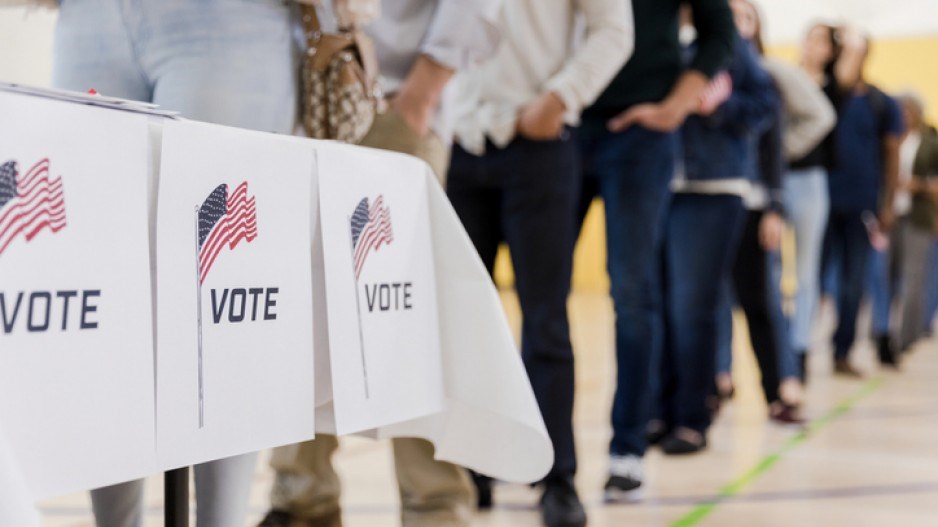Almost four years have passed since Republican Party nominee Donald Trump announced to the world that he had won a majority of the vote in the Electoral College to become the 45th president of the United States. The polls that suggested that Democratic Party contender Hillary Clinton would win the national popular vote were right. The setback that doomed the expectations of people who wanted Trump to lose was the absence of fresh surveys in states like Michigan, Pennsylvania and Wisconsin.
To borrow a phrase from former defense secretary Donald Rumsfeld, the 2020 presidential race has had its share of “known knowns,” “known unknowns” and “unknown unknowns.” Some numbers have been remarkably stable over the past five months, with Trump’s approval rating in Research Co. surveys of Americans staying below the 45% threshold.
Over the past four months, the proportion of American decided voters who are willing to cast a ballot for Democratic Party nominee Joe Biden has stayed at 53%, with Trump at least eight points behind. This would make the popular vote in this election comparable to the 2008 contest, when Democrat Barack Obama won with 53% and Republican John McCain finished second with 46%.
In spite of Trump’s defiant tweets, seeking re-election has been more difficult than performing as an anti-system contender. Even the usually reliable viewers of the Fox News Network are not as excited about him this year. In our surveys, Trump is still expected to get a majority of the votes from this sub-group, but his stature has dropped from a high of 75% in June to 66% earlier this month. One-third of decided Fox News viewers are with Biden or third-party candidates.
The “known unknowns” are about human behaviour. There are few undecided voters left, and not many who say they may consider other candidates before heading out tomorrow. Millions of Americans have already cast their ballots, and the long lineups in specific states suggest a feeling of unease with COVID-19. While we saw a bit of a jump for the federal government on its handling of the pandemic, the level of satisfaction stands at 46%, significantly lower than state (65%) and local (69%) administrations and eerily similar to Trump’s approval rating and vote share.
It is important to note that Biden holds sizable leads over Trump on the issues that have transfixed the electorate over the past few months: COVID-19 (51% to 32%) and race relations (53% to 27%). The Democratic nominee is also the top choice to manage the environment (54% to 28%) and health care (46% to 37%) and is slightly ahead on two competencies Republican candidates used to own: national defence (44% to 42%) and the economy (45% to 42%).
Social media has been riddled with suggestions that the process will be tainted. When we last asked, about four in five American likely voters were confident that the people responsible for conducting elections in their state will be able to oversee the entire process, enforce social distancing at polling stations and ensure that there is no fraudulent activity with mailed ballots.
Now we look at the biggest mysteries of this election. As you read these lines on the first Monday of November, we will be asking questions to American likely voters. Polling conducted on the final days of campaigns has proven successful in pinpointing winners at the national and state levels. Still, more than 70 million Americans have already cast their ballots by mail or during early voting. The final surveys may find us contacting people who cannot possibly change their minds.
Also, as residents of British Columbia and Saskatchewan recently realized, we have to be patient with the vote count. In statewide races, a difference of a few thousand votes could mean a shift, depending on where the postal ballots are coming from. This could make calling the election significantly harder for networks and might bring days of uncertainty for observers and markets alike.
The notion of a vague outcome is not new in this century. In the 2000 and 2004 contests, results in Florida and Ohio, respectively, delayed the traditional speeches. Obama’s victories in 2008 and 2012 were more akin to the elections of the 1980s and 1990s.
Finally, it is worth remembering that Canadians are not thrilled with Trump. Back in August, only 17% considered that having him in the White House had been “good” for Canada. Our feelings towards Biden are currently lukewarm and not entirely affectionate.
If the Democratic nominee indeed wins, it will be fascinating to analyze the behaviour of the Canadian media and the attention that is paid to affairs in Washington. Trump has enthralled us, partly because of the opportunity to look down on America for its choice in 2016. It is unclear what our attitude will be if Trump becomes the first president since George H. W. Bush in 1992 to lose his re-election bid. But, as Rumsfeld said, the “unknown unknowns” tend to be “the difficult ones” in the history of free countries. •
Mario Canseco is president of Research Co.
Results are based on an online study conducted from October 16 to October 18, 2020, among 1,100 American adults. The margin of error, which measures sample variability, is plus or minus 3.0 percentage points, 19 times out of 20.




